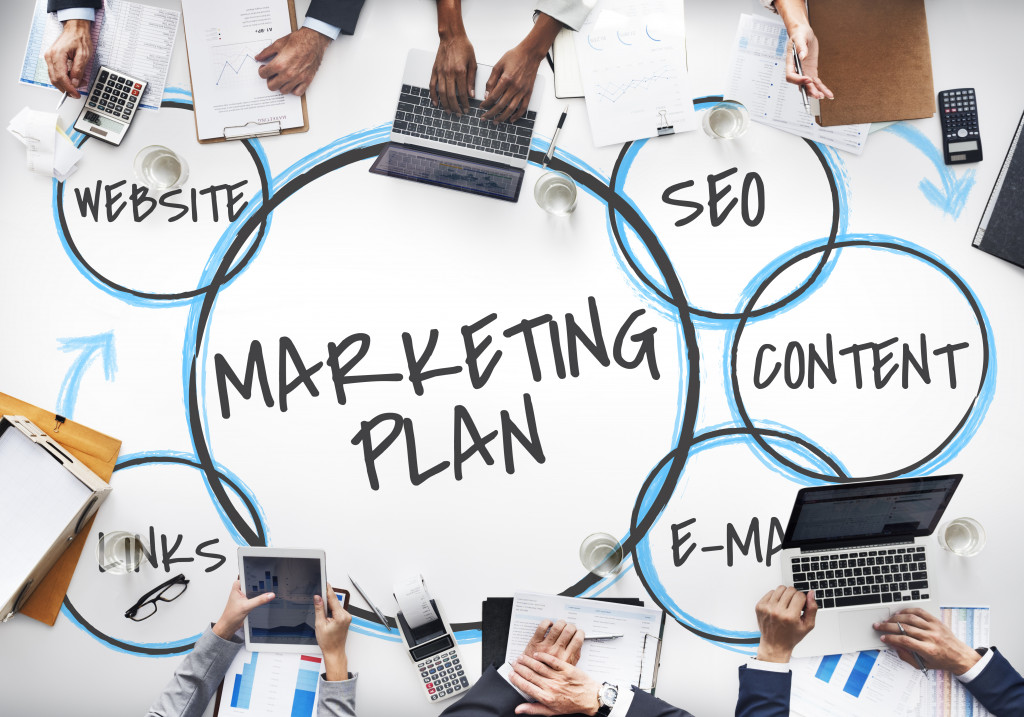- Traditional marketing, involving TV, radio, and print, reaches a broad audience but is less effective today.
- Digital marketing, leveraging the internet and social media, offers targeted and data-driven campaigns.
- Due to familiarity, traditional marketing provides tangible materials, broad reach, and is highly trusted.
- Digital marketing is more cost-effective, easily measured, and offers valuable content creation opportunities.
- Combining both strategies offers the broad reach of traditional marketing with the precision and cost-effectiveness of digital marketing.
Marketing is an essential component of any business plan. It involves promoting the company’s product or service to attract customers. Traditional marketing has been around forever and is well-known and understood by many. However, digital marketing has become increasingly popular with the rise of digital technology. Here’s an exploration of traditional and digital marketing and each approach’s advantages and disadvantages.
Traditional Marketing
In traditional marketing, businesses use channels such as TV and radio ads, billboards, and print ads to reach their customers. Previously, traditional marketing was more successful as it was the only format available before the internet. The success of traditional marketing rested on its ability to reach a broad audience. However, with technological advancements, traditional marketing is no longer as effective as it once was. It is worth noting that traditional marketing can still be effective for targeted campaigns, as some demographics prefer traditional media.

Digital Marketing
Digital marketing promotes products or services through digital media such as the Internet or social media. Businesses spend about $244 billion in this form of marketing alone.
Digital marketing has become essential in recent years due to the rise of the internet. Businesses now have diverse channels and information available to reach their target audience. With digital marketing, it is easier to target specific demographics successfully. Digital marketing allows businesses to track and gain customer insight through data analysis tools.
Advantages of Traditional Marketing
There are many advantages of traditional marketing. Here are some of them:
Tangible Materials
One of the primary advantages of traditional marketing is the creation of tangible promotional material. Items like brochures, flyers, and business cards can give customers a physical piece of advertising they can hold onto and refer to at any time. This tangible aspect can lead to increased brand recognition and memory retention.
Reach a Broad Audience
Traditional marketing techniques such as TV, radio, and print ads can reach a vast and diverse audience. Traditional channels can be beneficial for businesses interested in mass marketing, reaching those who may not have regular internet access or use.
Highly Trusted
Due to its longevity and familiarity, traditional marketing is often seen as more trustworthy than digital marketing. Consumers are usually more comfortable with formats they know and understand; for many, print, radio, and TV advertising fall into that category.
Advantages of Digital Marketing
There are also many advantages of digital marketing. Here are some of them:

Content
One of the key advantages of digital marketing is the ability to provide content. Businesses can now produce compelling, informative, and helpful content that can be used to engage customers and build trust. One particular strategy that takes advantage of written content is SEO. This kind of content can increase online visibility and bring in more leads. SEO services offer this strategy to marketers and businesses. It’s far more affordable and cost-effective than traditional marketing methods.
Cost-Effective
Digital marketing can be cost-effective, especially when compared to traditional marketing. With digital marketing, businesses don’t have to pay for printing or postage fees as they would with traditional methods. Digital techniques can also be implemented quickly and easily without a large budget.
Easily Measured
Digital marketing allows businesses to track their results in real time. This makes it easy for marketers to measure the success of their campaigns and make adjustments as needed. Digital tools also allow companies to understand how consumers interact with their websites, which can help them determine what works and what doesn’t.
Which to Choose?
Whether to choose traditional or digital marketing is primarily a matter of preference. Businesses should evaluate their goals and target audience before making a decision. For instance, traditional methods may be the best option if you are looking for mass exposure. On the other hand, those who are targeting specific demographics can benefit more from digital media.
Traditional and digital marketing have their advantages and disadvantages. Ultimately, the best thing to do is to combine both strategies for maximum results. This way, businesses can reach a broad audience while still taking advantage of modern tools like content creation, data tracking, and cost-effectiveness. With an effective combination of traditional and digital techniques, companies can see a more substantial return on investment and increased visibility.

